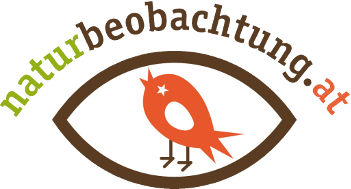
Museumsplatz 2
5020 Salzburg
naturbeobachtung.at
Since 2006, a wide variety of nature observations can be reported on naturbeobachtung.at. Specially designed reporting masks for various groups of animals, plants and fungi allow detailed entries. The reporters can, as far as possible, identify their observations taxonomically or report them as "undetermined species". The latter can then be subsequently identified by the community. Optionally, more precise reports are possible, e. g. with weather data or a detailed description of the site including site photos. Uploading photos of specimens is explicitly encouraged (and mandatory in the app, which also provides mobile access to naturbeobachtung.at). The possibility to upload "picture series" of an observed individual makes it much easier for the experts to check the reports, especially for species that are difficult to identify.
Discuss with like-minded people
A special highlight of the web version is the lively discussion forum with over 250,000 text contributions from over 42,500 discussions. Here, registrants can exchange information with other nature enthusiasts, show their most beautiful nature photographs or ask experts for identification help.
Report even easier with the app!
In 2018, the web version was expanded to include a free app for smartphones with the same name. Reporting via the app is simple, straightforward and fast: images (Exif data) and GPS data "automatically" provide all relevant data that are important for reporting an observation. The reports from the web and app are synchronized and can therefore be viewed on all devices.
What will happen with the records?
All reports are checked regularly by experts. For reports with already assigned species name, the determination is checked and evaluated as "confirmed", "plausible", "doubtful" or "wrong". If the species name has not yet been assigned, the expert "determines" the species. If the reporter was only able to assign the observation to one species group, experts have the possibility to "specify" the finding on species level. The reporters are automatically informed of the result of the data check or determination - via email in the web application, via push message in the app.
Who checks the data?
More than 60 experts from all biological disciplines provide naturbeobachtung.at with their expertise. Most of them are volunteer experts from universities, museums or technical offices. In the course of time, more and more "amateur experts" with profound knowledge of species have also been authorized to validate data on the platform. The introduction of people to scientific activities is a declared goal of this Citizen Science project!
Teaching species knowledge - with fun
In 2021, the web version and app were expanded to include two new functions especially for schoolchildren and newcomers: Firstly, competitions - searches for a small number of easily recognizable species over a certain period of time - are intended to provide a playful introduction to observing, recognizing and reporting species. Species knowledge can secondly be tested and improved in an exciting way with various species quizzes: In increasing degrees of difficulty, the task is to assign the correct species name to a photo shown.
What has happened so far
To date, over one million observations have been reported by over 21,000 contributors and more than 760,000 photos have been uploaded. The data obtained are used for further conservation measures and provide an excellent basis for current scientific work.
The most common examples of the use of data from naturbeobachtung.at are master and doctoral theses, as well as scientific studies. Data from naturbeobachtung.at is also used in the compilation of Red Lists and distribution atlases. Observation data is also made available to various institutions as part of project cooperations: For example, data on amphibians and reptiles, will be entered into the database of Naturhistorisches Museum Wien in 2025, while data on plants will be entered into the Haus der Natur biodiversity database. Work is currently underway to integrate naturbeobachtung.at data into GBIF.
In this way, the Naturschutzbund with its Citizen Science platform naturbeobachtung.at significantly supports biodiversity research in Austria! Join us – as a nature observer or expert!
Podcast episode
If you would like to learn more, you can listen to the "Wissen macht Leute" podcast episode about the project (in German). More information can be found here.
Citizen Science Seminar
In 2021, poject coordinator Gernot Neuwirth held a lecture about naturbeobachtung.at as part of the lecture series "Citizen Science Seminar" at the University of Natural Resources and Life Sciences Vienna (BOKU): "Factors for a successful contribution of Citizen Science to biodiversity research" (in German). At the end of this page you can watch the video recording of the lecture.
-
 Fire salamander Fire salamander
Fire salamander Fire salamander -
 Ladybird spider Ladybird spider
Ladybird spider Ladybird spider -
 Fire Salamander Fire Salamander
Fire Salamander Fire Salamander -
 Bombus argillaceus Bombus argillaceus
Bombus argillaceus Bombus argillaceus -
 Southern festoon Southern festoon
Southern festoon Southern festoon -
 Cypripedium calceolus Cypripedium calceolus
Cypripedium calceolus Cypripedium calceolus -
 European stag beetle European stag beetle
European stag beetle European stag beetle -
 Common European viper Common European viper
Common European viper Common European viper -
 European mantis European mantis
European mantis European mantis -
 Bleeding fairy helmet Bleeding fairy helmet
Bleeding fairy helmet Bleeding fairy helmet -
 Stoat Stoat
Stoat Stoat -
 Eurasian pygmy owl Eurasian pygmy owl
Eurasian pygmy owl Eurasian pygmy owl -
 Exemplary project page Exemplary project page
Exemplary project page Exemplary project page -
 Image Gallery (web version, details) Image Gallery (web version, details)
Image Gallery (web version, details) Image Gallery (web version, details) -
 Express input mask Express input mask
Express input mask Express input mask -
 Raster chart with farmland filter Raster chart with farmland filter
Raster chart with farmland filter Raster chart with farmland filter -

-

-

-

https://www.citizen-science.at/en/projects/naturbeobachtung-at-535#sigProIdeedad584c1
This project fulfils version 1.1 of the quality criteria for citizen science projects on Österreich forscht.
Download attachments:
- animals
- plants
- mushrooms

